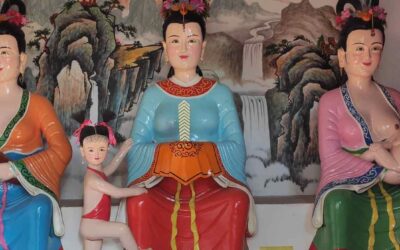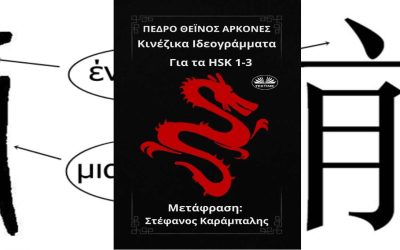The secret treasure of ancient Chinese art
China has a fabulous artistic treasure hidden from the eyes of the public and specialists. It is her best kept treasure, because given the dispersion of its location, the difficulty of conservation and even evaluation and cataloging, few people have been able to enjoy it live and only a few more in illustrated books or internet reports. It includes thousands of paintings, created by the best masters of the time for more than 10 centuries, their names have rarely reached us, their art has hardly been analyzed and their presence in the encyclopedias of the field is only marginal. I am referring to the art of ancient tombs.
In an article full of data and ideas, Michèle Pirazzoli-t’Serstevens tries to bring some order to a study saturated by an excess of information. As she points out, «For the Qin and Han period alone (221 BC – 220 AD), several tens of thousands of tombs have been discovered in the last 50 years.»
The importance of these discoveries for the study of China’s religion and culture during those dynasties cannot be underestimated. «We can say that the tombs, their decoration and furnishings constitute as a whole a compendium of cosmological beliefs, conceptions and rites linked to death, but also of the myths, divinities and demons that populated the imaginary world of the Han.»
She warns that during the Han period the structure of the tombs underwent radical transformations. Between the second century before and the first century of our era, they went from hermetic burials, vertical pits centered in holes to horizontal constructions excavated in the rock or more often subway, conceived in the image of the dwellings of the living. They were accessed through an entrance corridor, and it was possible to circulate inside them, as they were mostly organized around a central axis. «This new form allowed the living to easily enter and leave the tomb at the time of the funeral, a real revolution.»
That points to a series of changes in the religious mentality of the people and in their conception of death that show beliefs completely different from those held during the previous centuries, and at the same time a variation in the same that they point out were not yet in any way standardized.
If before the first century B.C. the dead was only a link in the chain of ancestors, honored as such in the ancestral temple, from then on each ancestor (at least in noble families) is venerated individually in a specific place. The tomb ceases to be a place only for the dead, to become, thanks to the rites and offerings that are repeated there, a place where the living and the dead communicate. It is also the new home in which the dead will remain, and at the same time, the starting point from which their soul ascends to paradise, as the image known as the «door to heaven» points out.
In turn, the iconography, which had previously focused on the coffin or on the cloths that wrapped the corpse, was transferred to the walls of the tombs, allowing for a more complex narrative and expressive possibilities similar to those used in the palaces. In general showing the three levels of the universe, the heavens, the world of men and the underworld.
The ceiling of the tomb is assimilated to the sky, and the floor to the earth. The content of the same to everything that exists in this world, often representing both the material and spiritual aspects of existence.
A study of the iconography of these tombs, which is generally repeated in its basic theme, with deities ascending, others already in the heavens, suns, moons, processions that go to the top, or to the tomb itself, and the 4 auspicious animals (green dragon, white tiger, red bird and black turtle) recreating the protection that comes from the four cardinal points, provides complex information about the beliefs of the time, and how they evolved throughout the Han dynasty.
Much less research has been done on the artistic value of these paintings, although it can be assumed that the same artists who worked on the decoration of the palaces used by the nobles in life would have worked in some of the cases on the decoration of their abodes in the afterlife.
Nevertheless, the author, within her merely descriptive purpose of the current situation, already encourages the study of these tombs from a perspective that focuses even more on the historical moment in which they were created and on the local traditions they might represent.
The article does not stop at these general considerations, but analyzes in some detail each of the iconographic elements: deities, immortals, funerary objects, auspicious gods, etc.
For the person interested in Chinese culture in general it is enough for the moment to know that masterpieces of Chinese art are being discovered almost every week in ancient tombs.
Pirazzoli-t’Serstevens, Michèle. Death and the dead: practices and images in the Qin and Han. In Early Chinese Religion Part one: Shang through Han . In Early Chinese religion ; pt. 1: Shang through Han (1250 BC – 220 AD). 2009. Pp. 949-1026
Last posts
The Local Lords cult of the Bai nationality
The worship of the Local Lords (benzhu) is the most characteristic of the Bai people. Their religious life revolves around the Benzhu temple of each village, as each village venerates a local lord, sometimes a historical figure who sacrificed for the people. In other...
Zhang Yongzheng, the master of deluding reality
Zhang Yongzheng, the master of deluding reality Reality is an illusion, say Buddhist texts. And each of Zhang Yonggzheng's (Gansu, 1978) works plays with this concept to remind us again and again that there is no immutable reality but a fluid universe of forms that...
The book Hanzi for HSK 1-3 now available in Greek language
The book “Hanzi for HSK 1-3” now available in Greek language This April, the translation of my book Hanzi for HSK 1-3 has been published in the main digital bookstores in Greece. The Greek version of this book, from the pen of Stefanos Karampalis, has been one of...







